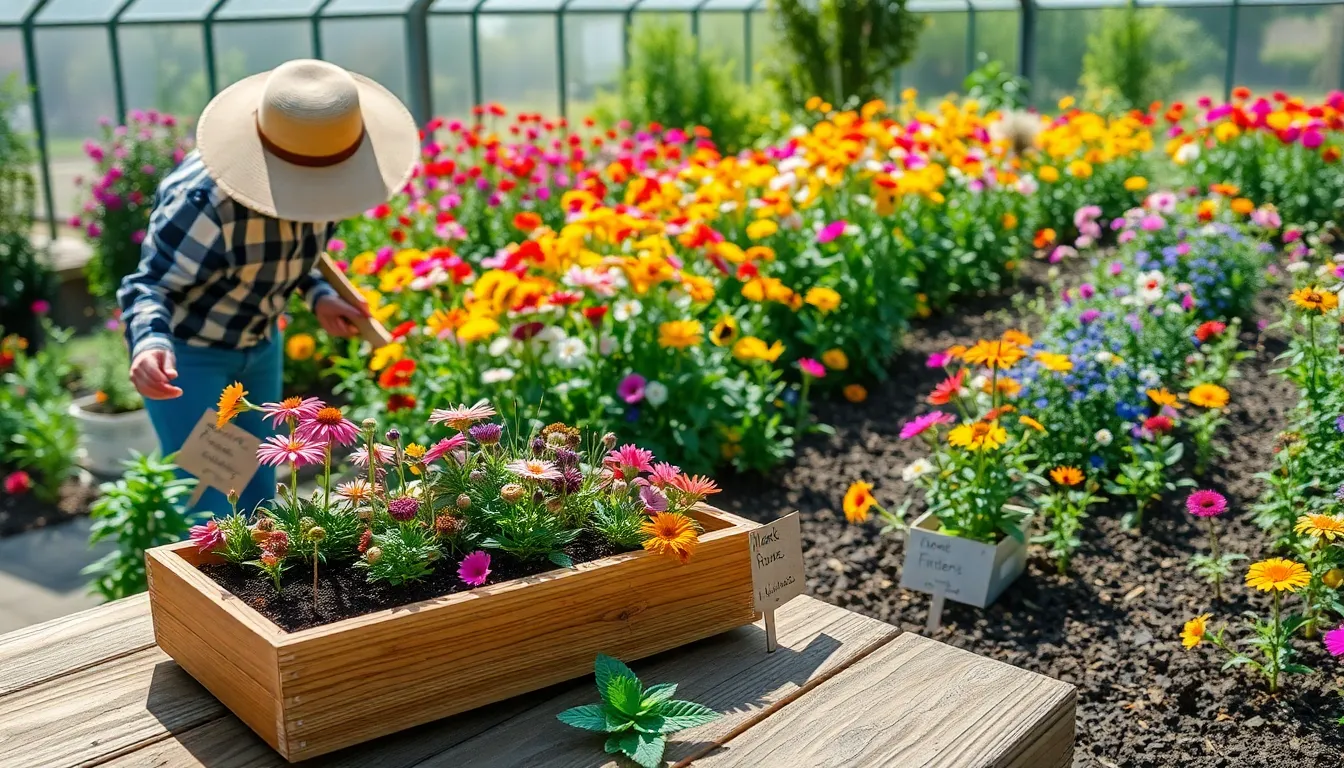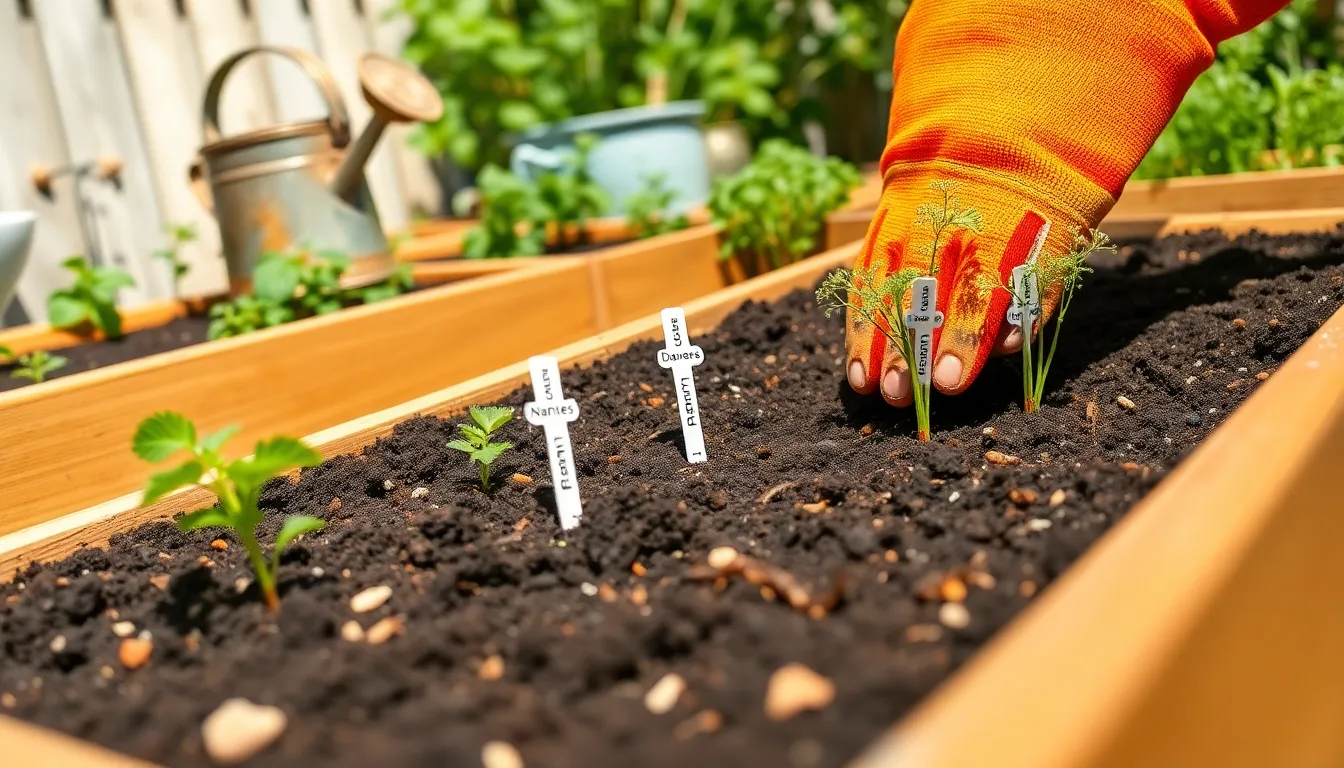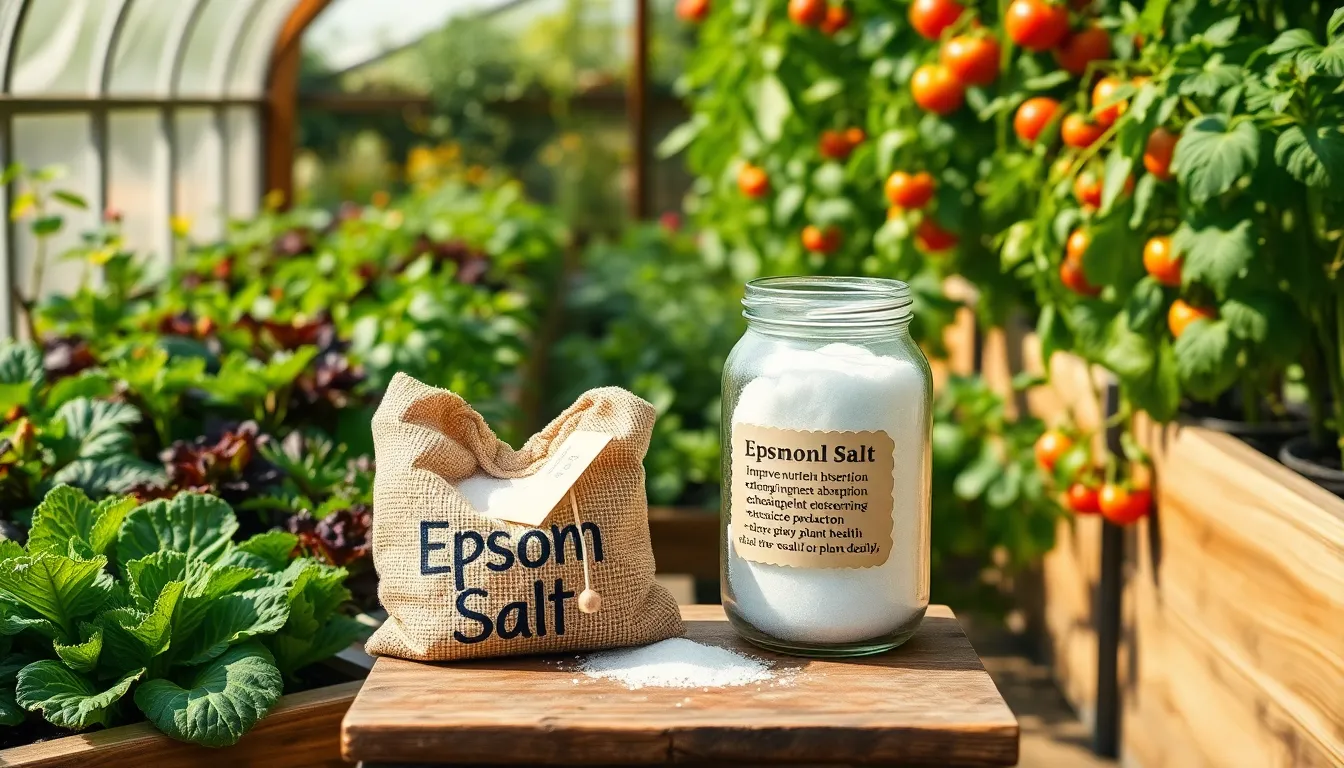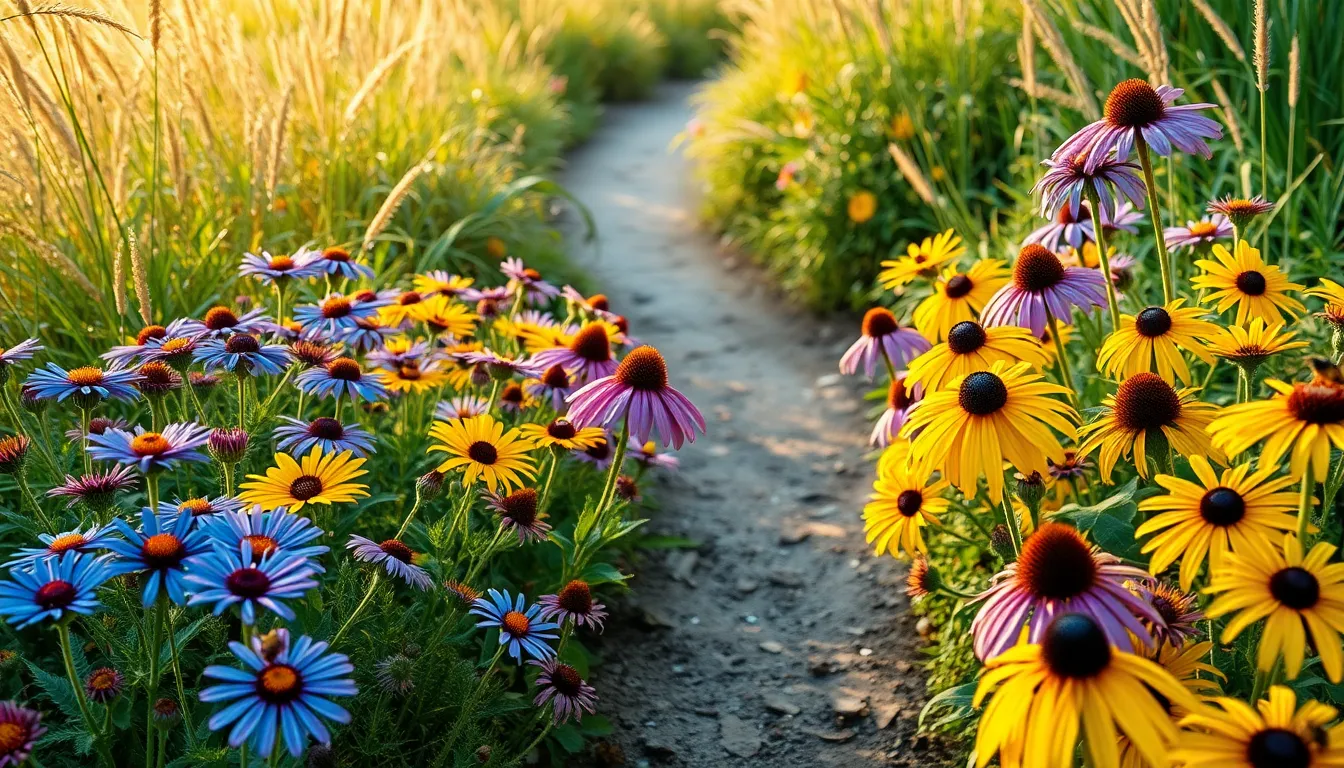Imagine stepping into your garden and being greeted by a vibrant tapestry of colors, where butterflies dance joyfully and bees hum contentedly. A wildflower garden can transform your outdoor space into a lively ecosystem, offering both visual delight and a haven for pollinators. Whether you’re a seasoned gardener or just beginning to nurture your green thumb, creating a wildflower haven is a rewarding endeavor that connects you intimately with nature’s rhythms and cycles.
The beauty of a wildflower garden lies in its charming unpredictability and effortless grace. For beginners, this project promises an accessible entry into the world of gardening, offering a celebration of nature with minimal fuss. Experienced gardeners will appreciate the intricate layers of planning and observation it invites, allowing for creativity and the joy of watching nature paint its own masterpiece. Together, we’ll explore not just the ‘how’ but the ‘why’—understanding the time and care these gardens require helps set realistic expectations and ensures a flourishing result.
In this article, you’ll learn the steps to efficiently plan and plant your wildflower garden, while gaining insights into the timeline from seed to bloom. We’ll delve into practical tips and strategies, from selecting the right seed mix to understanding soil preparation and planting techniques. By the end, you’ll feel equipped and inspired to embark on this delightful journey, confident in each step you take. Let’s dive in and discover just how gratifying and simple it can be to bring a wildflower dream to life.
Understanding Wildflower Growth Timelines
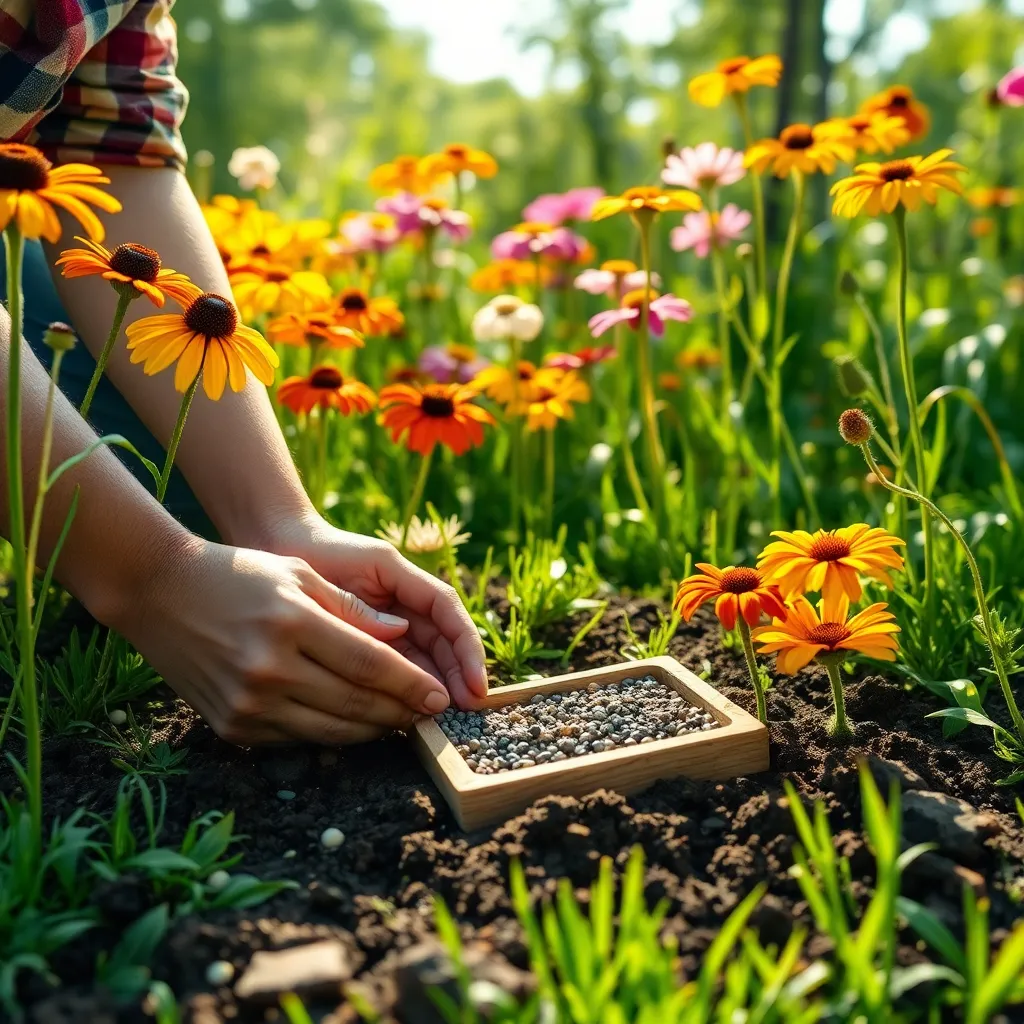
Understanding the timeline of wildflower growth is essential to successfully cultivating a vibrant garden. Wildflowers generally take between 60 to 90 days to bloom after sowing, depending on the species and growing conditions.
To ensure a successful wildflower garden, it’s important to prepare your soil properly. Wildflowers thrive best in well-drained soil, so consider adding sand or organic matter to improve drainage if necessary.
Beginner gardeners should focus on selecting a mix of annual and perennial wildflowers to enjoy blooms throughout the growing season. Annuals will provide immediate color, while perennials establish deeper root systems for longevity.
Advanced gardeners might experiment with creating microclimates within their garden to extend the blooming period. This can be achieved by planting taller species to provide shade to those that prefer less direct sunlight.
Watering practices play a crucial role in wildflower growth, particularly during the germination stage. It is recommended to keep the soil consistently moist but not waterlogged, watering lightly every few days.
By understanding these timelines and care requirements, you can enjoy a flourishing wildflower garden that supports local ecosystems. Be patient and attentive, as wildflowers will reward you with both beauty and biodiversity.
Preparing Your Garden Site Efficiently

Before you start planting your wildflower garden, it’s crucial to select an appropriate site that receives adequate sunlight. Most wildflowers thrive in full sun, which means they need at least six hours of direct sunlight daily.
Once you’ve chosen a location, evaluate the soil quality to ensure it’s suitable for planting wildflowers. Wildflowers generally prefer well-draining soil, so consider conducting a percolation test to check drainage.
Improve your soil’s fertility by incorporating organic matter, such as compost or well-rotted manure. This not only enhances soil structure but also provides essential nutrients that support wildflower growth.
For gardeners dealing with challenging soil types, using a soil amendment can be a game-changer. Consider adding sand to clay-heavy soils to improve drainage or peat moss to sandy soils to enhance moisture retention.
Additionally, clearing the site of weeds and debris is imperative for a successful wildflower garden. Weeds compete with wildflowers for nutrients, so remove them thoroughly, either by hand or with a hoe, before planting.
Choosing Quick-Growing Wildflower Varieties

To kick-start your wildflower garden, selecting quick-growing varieties can provide almost instant gratification. These varieties not only establish rapidly but also help in suppressing weeds, making your garden easier to manage from the outset.
One excellent choice is the California poppy, known for its vibrant orange blooms and adaptability. It thrives in well-drained soil and requires minimal watering, making it perfect for beginners looking to add a splash of color with minimal effort.
Another fast-growing favorite is the cornflower, which blooms in shades of blue and is highly attractive to pollinators. Plant cornflowers in a sunny location with fertile soil, and water them moderately to encourage robust growth.
For those seeking a bit more diversity, consider a mix that includes annuals like cosmos and zinnias. These flowers not only grow rapidly but also provide a succession of blooms, ensuring your garden remains lively throughout the growing season.
Advanced gardeners might experiment with direct sowing techniques to speed up germination. By soaking seeds overnight or stratifying them in the fridge for a few weeks, you can significantly boost the germination rate and ensure a lush, vibrant display.
- Tip for Beginners: Choose a location with at least six hours of sunlight to help these flowers thrive.
- Advanced Tip: Incorporate organic matter into your soil to improve drainage and nutrient availability.
Planting Techniques for Faster Results
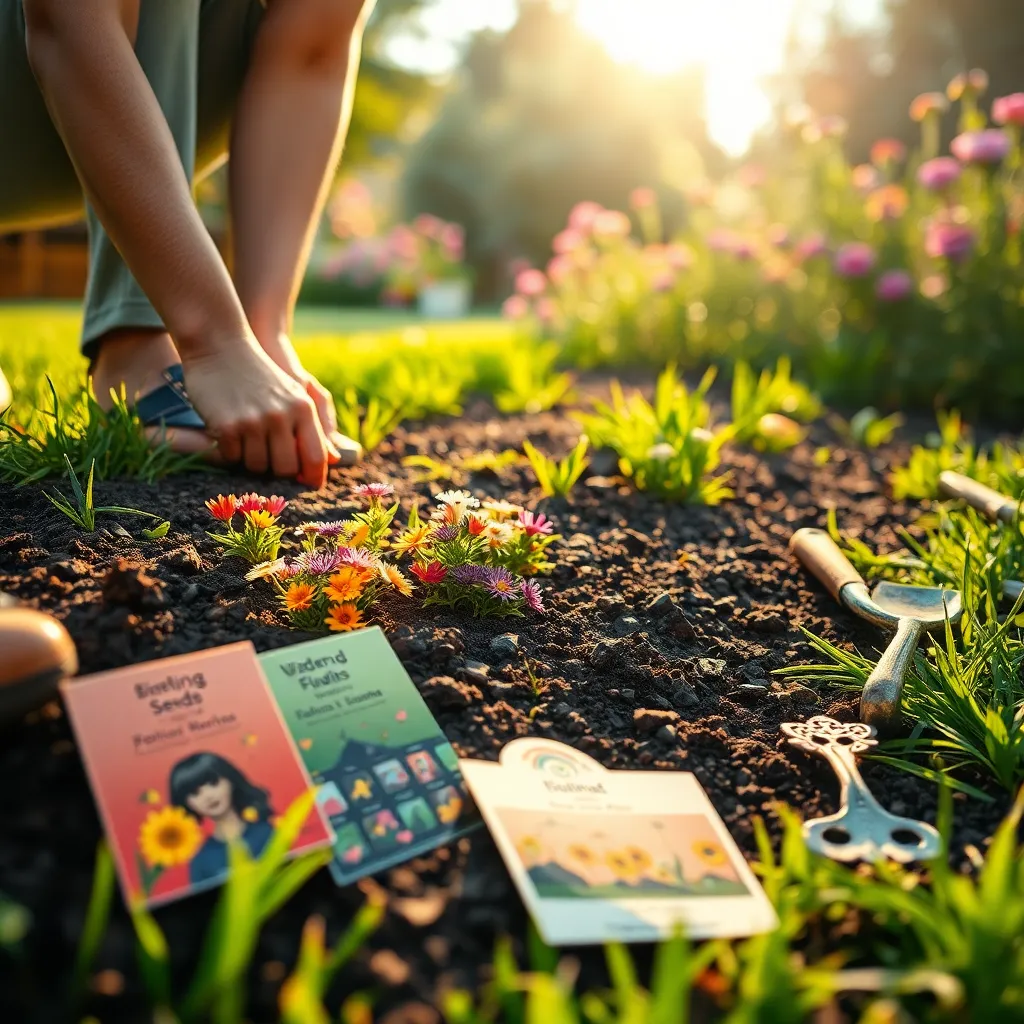
To achieve quicker results in your wildflower garden, start by preparing the soil thoroughly. Ensure the soil is loose and well-drained, as compacted soil can hinder root growth and slow down germination.
Next, consider using a seed starter mix if you’re opting for indoor germination before transplanting. This mix provides a nutrient-rich environment, encouraging seeds to sprout faster than they might in bare soil.
When planting outdoors, it’s beneficial to broadcast seeds evenly across the prepared soil surface. Lightly rake the seeds into the soil, ensuring they’re not buried too deeply, as many wildflowers need sunlight to germinate.
Maintaining consistent moisture is crucial for seed germination. Water gently and regularly, aiming to keep the soil moist but not waterlogged, which can lead to seed rot.
Maintenance Tips for Timely Blooms
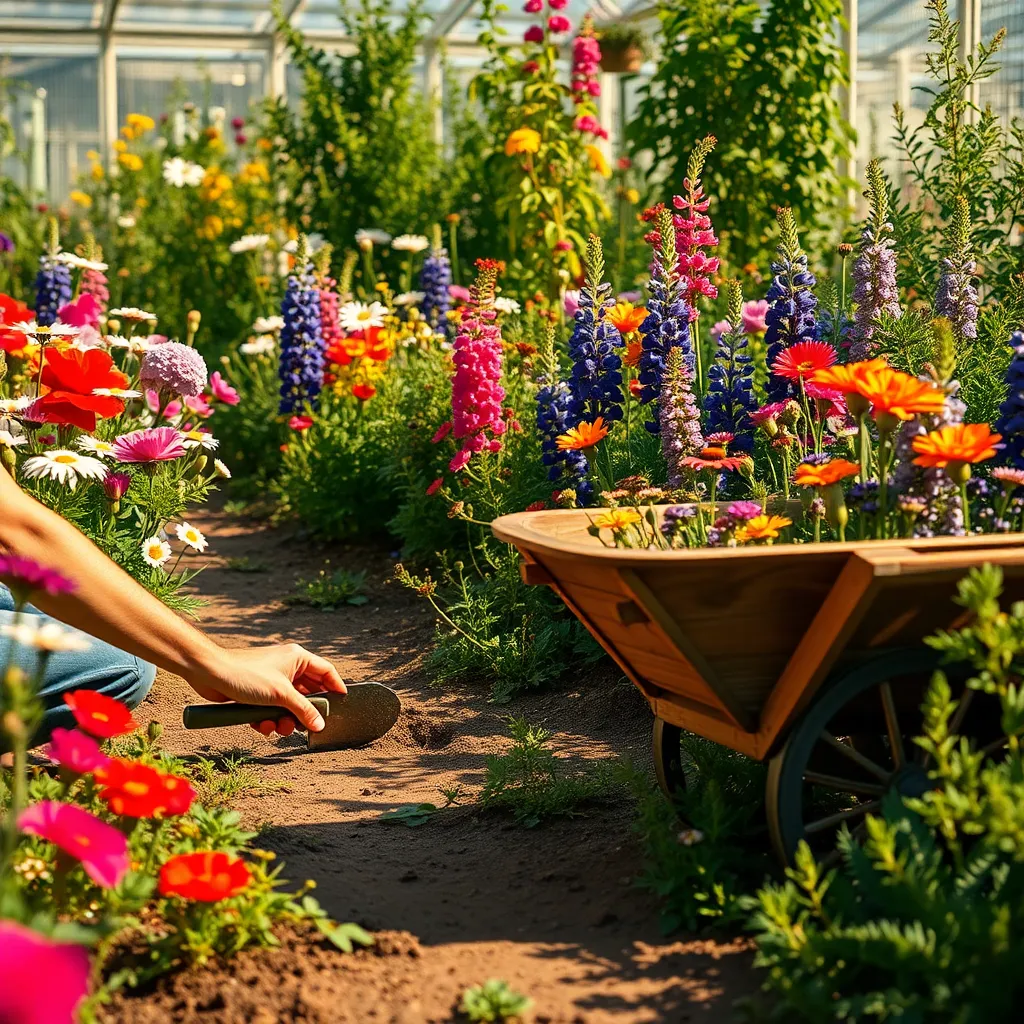
To ensure your wildflower garden blooms on schedule, start by monitoring soil moisture levels closely. Wildflowers generally prefer well-draining soil, so it’s essential to avoid overwatering; aim for a watering schedule of twice a week, adjusting based on rainfall.
Ensure the wildflowers receive adequate sunlight by positioning them in an area that gets at least six hours of direct sunlight daily. If your garden is shaded, consider selecting shade-tolerant wildflower varieties to maintain vibrant growth.
Regularly inspect your garden for weeds, as these can compete with wildflowers for nutrients and water. Weed removal is crucial, so use hand-pulling or a hoe to keep your garden clear, especially in the early stages of growth.
Fertilization can enhance bloom quality, but use it sparingly to avoid excessive foliage growth at the expense of flowers. Opt for a balanced, slow-release fertilizer applied once in early spring to support healthy blooms without overwhelming the plants.
Conclusion: Growing Success with These Plants
In planting a wildflower garden, much like nurturing a relationship, we explored five key concepts: patience, commitment, adaptability, timing, and growth. Patience reminds us that lasting relationships, like gardens, take time to flourish. Commitment is the dedication to consistently nurture what you have. Adaptability allows us to embrace change and grow together. Timing ensures that actions and decisions align with both partners’ readiness. Finally, growth is the ongoing journey of learning and evolving together.
As an immediate step, reflect on these concepts in your own relationship. Identify one area where you can plant seeds of change today, be it through a thoughtful conversation or a simple gesture of appreciation.
To ensure these insights remain at your fingertips, bookmark this article. Let it serve as your guide in cultivating a thriving relationship.
Looking ahead, remember that with care and effort, your relationship can blossom into something beautiful and enduring. Embrace each moment as an opportunity to grow together, knowing that the journey is as rewarding as the destination. Empower yourself with these insights to cultivate love that lasts.

